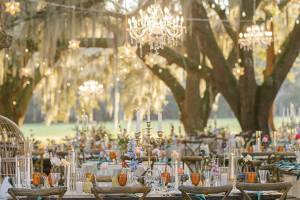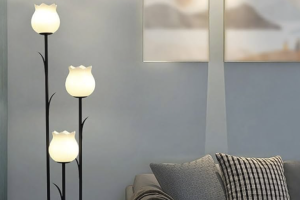The Beauty of Ornamental Animals: Exploring the Fascinating World of Decorative Creatures
Introduction: The Allure of Ornamental Animals
Ornamental animals have long captivated the human imagination with their beauty, grace, and unique characteristics. These animals, often bred for their aesthetic appeal, have a special place in our hearts and homes. From colorful fish swimming in aquariums to exotic birds perched in cages, ornamental animals bring a touch of nature’s splendor into our lives. They come in various forms, including fish, birds, reptiles, and small mammals, each with its own allure and charm.
The History of Ornamental Animals and Their Significance
The history of ornamental animals dates back centuries, with evidence of their presence found in ancient civilizations. In ancient Egypt, for example, cats were revered as sacred animals and were often depicted in art and sculptures. In China, goldfish were bred for their vibrant colors and graceful movements, symbolizing good luck and prosperity. In many cultures, birds such as parrots and canaries were kept as pets for their melodious songs.
Ornamental animals have always held a significant place in society. They were often seen as status symbols, with the wealthy and powerful showcasing their wealth by owning rare and exotic species. In some cultures, certain animals were associated with specific virtues or qualities. For example, the peacock was seen as a symbol of beauty and pride in ancient India.
The Art of Breeding and Raising Ornamental Animals
Breeding and raising ornamental animals is both an art and a science. Breeders carefully select individuals with desirable traits to produce offspring that exhibit those traits to a higher degree. This process is known as selective breeding. It requires extensive knowledge of genetics and a keen eye for detail.
Different techniques are used to breed and raise ornamental animals depending on the species. For fish, breeders may use controlled environments to mimic natural conditions and encourage breeding behavior. Birds may require specific diets and nesting materials to stimulate breeding. Reptiles may need specialized enclosures with temperature and humidity control.
The Most Popular Ornamental Animals and Their Characteristics
Some of the most popular ornamental animals include tropical fish, parrots, reptiles like bearded dragons and geckos, and small mammals like hamsters and guinea pigs. These animals have unique characteristics that make them appealing to pet owners.
Tropical fish are known for their vibrant colors and graceful movements. They come in a wide variety of shapes and sizes, each with its own distinct pattern and coloration. Parrots are highly intelligent and can mimic human speech, making them fascinating companions. Reptiles have a unique beauty and require minimal maintenance compared to other pets. Small mammals like hamsters and guinea pigs are known for their cute and cuddly appearance, making them popular choices for families.
The Role of Ornamental Animals in Culture and Society
Ornamental animals play a significant role in different cultures and societies. In some cultures, they are seen as symbols of wealth, power, or good luck. In others, they are kept as pets for companionship or entertainment.
In Japan, for example, koi fish are highly valued for their beauty and are often kept in ornamental ponds. They are believed to bring good fortune and prosperity to their owners. In the United States, parrots are popular pets due to their intelligence and ability to bond with humans. They are often seen as members of the family.
Ornamental animals also have a role in therapeutic settings. Studies have shown that interacting with animals can reduce stress and improve mental health. Many hospitals, nursing homes, and rehabilitation centers have programs that involve therapy animals visiting patients to provide comfort and companionship.
The Impact of Ornamental Animals on the Environment
While ornamental animals bring joy to many people’s lives, they can also have an impact on the environment. The trade of exotic animals, in particular, can contribute to the decline of wild populations and disrupt ecosystems.
The capture and transportation of wild animals for the pet trade can lead to stress, injury, and death. It can also introduce non-native species into new environments, where they may outcompete native species for resources or spread diseases. In some cases, released or escaped pets can establish feral populations that have negative impacts on local wildlife.
To mitigate these impacts, it is important for pet owners to be responsible and well-informed. They should only purchase animals from reputable breeders or adopt from rescue organizations. They should also ensure that they have the knowledge and resources to provide proper care for their pets throughout their lives.
The Ethics of Keeping Ornamental Animals as Pets
The ethics of keeping ornamental animals as pets is a complex issue. On one hand, many people argue that it is natural for humans to form bonds with animals and that keeping them as pets can provide companionship and enrichment. On the other hand, there are concerns about the welfare of these animals and the potential for exploitation.
It is important for pet owners to consider the needs and well-being of their animals. They should provide appropriate housing, nutrition, and veterinary care. They should also ensure that their pets have opportunities for mental and physical stimulation.
Neglecting these responsibilities can have serious consequences for the animals involved. They may suffer from poor health, behavioral issues, or even premature death. It is crucial for pet owners to educate themselves about the specific needs of their chosen species and to be prepared to meet those needs before bringing an ornamental animal into their home.
The Future of Ornamental Animals: Trends and Innovations
The future of ornamental animals is filled with exciting trends and innovations. Advances in technology are changing the way we breed and raise these animals, making it easier than ever to create and maintain healthy populations.
One trend that is gaining popularity is the use of genetic engineering to create new and unique traits in ornamental animals. For example, scientists have successfully created glow-in-the-dark fish by inserting genes from other organisms. This technology has the potential to revolutionize the ornamental animal industry by allowing breeders to create animals with specific traits or colors.
Another trend is the use of sustainable practices in breeding and raising ornamental animals. Many breeders are now focusing on conservation efforts and working to ensure that their practices are environmentally friendly. This includes using sustainable food sources, reducing waste, and promoting responsible pet ownership.
The Challenges and Rewards of Caring for Ornamental Animals
Caring for ornamental animals can be both challenging and rewarding. It requires a commitment of time, resources, and knowledge. However, the bond that can be formed between humans and animals can be incredibly fulfilling.
One of the challenges of caring for ornamental animals is providing them with appropriate housing and enrichment. Different species have different needs, and it is important for pet owners to research and understand these needs before bringing an animal into their home. This may involve creating specialized enclosures, providing specific diets, or offering mental stimulation through toys and activities.
Another challenge is ensuring that the animals receive proper veterinary care. Regular check-ups, vaccinations, and preventative treatments are essential for maintaining their health and well-being. Pet owners should also be prepared for unexpected medical expenses that may arise.
Despite these challenges, caring for ornamental animals can be incredibly rewarding. The bond that can be formed between humans and animals is unique and can bring immense joy and companionship. Many pet owners find that their animals provide comfort during difficult times and enrich their lives in ways they never expected.
Conclusion: The Enduring Appeal of Ornamental Animals
Ornamental animals have a timeless appeal that transcends cultures and societies. They bring beauty, joy, and companionship into our lives. Whether it is the vibrant colors of tropical fish, the melodious songs of birds, or the playful antics of small mammals, these animals have a special place in our hearts.
While there are ethical considerations and environmental impacts associated with keeping ornamental animals as pets, responsible ownership and sustainable practices can help mitigate these concerns. As technology continues to advance, the future of ornamental animals holds exciting possibilities for new traits and sustainable practices.
In conclusion, ornamental animals have a lasting allure that continues to captivate us. They are a testament to the beauty and diversity of the natural world and remind us of our connection to it. Whether they are kept as pets, admired in zoos or aquariums, or celebrated in art and literature, ornamental animals hold a special place in our lives and culture.






